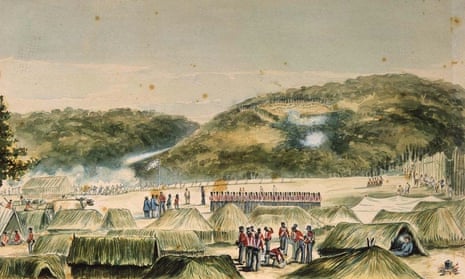The remains of 12 British soldiers who fought in New Zealand’s Northern War have been unearthed in a mass grave 170 years after the final battle.
The Northern War occurred between 1845-46 in New Zealand’s North Island and was waged by local Maori tribes railing against British rule.
The British Army pursued Maori chief Hone Heke and his supporters across the Northland district after he chopped down a British flag as a sign of protest against the colonists.
The Northern War was the first serious challenge to British rule by local Maori since the signing of the Treaty of Waitangi a number of years before, and is viewed by historians as the the beginning of the wider New Zealand Wars.
Archeologist Jono Carpenter has been searching for the remains of the soldiers since 2013, and told One News that finally locating them in Kawakawa was “hugely significant”.
“These men took the Queen’s shilling. They came from halfway around the world and ended up dying here and now their bones have become part of the earth,” he said.
According to Carpenter the men died during an attack on the Ruapekapeka pā on 11 January, 1846, in which 1600 British soldiers battled 400 Maori fighters. Despite the British troops far outweighing the Maori, the battle was seen as a draw by both sides.
The soldiers remains were located six metres underground and little remained of the bodies, thought a musket ball has been unearthed from beneath the ribs of one of the soldiers.
Pita Tipene is a descendant of both Maori chief Kawiti, who defended the Pa, and also of Colonel Robert Wynyard, who commanded the British troops.
“We’ve been wondering for years and years, ever since 1986, where the soldiers were buried and because we didn’t know where they were buried, we couldn’t give them the reverence and the respect that they deserved so this is absolutely huge,” Tipene told One News.
The Department of Conservation and local Maori tribes are currently consulting to decide how the remains of the troops will be remembered.
